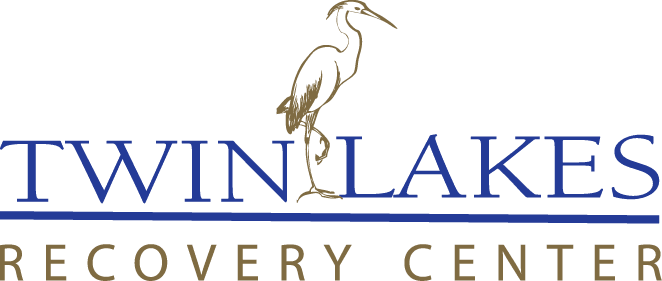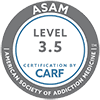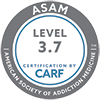Rural Georgia citizens struggle with many issues.
 From a lack of quality health care and high rates of poverty to few employment opportunities and large prison populations, people outside the state’s metro areas face numerous challenges. Many of these issues are mitigating factors that contribute to substance abuse problems.
From a lack of quality health care and high rates of poverty to few employment opportunities and large prison populations, people outside the state’s metro areas face numerous challenges. Many of these issues are mitigating factors that contribute to substance abuse problems.
Opiates Still a Valid Crisis
It’s not just the opioid crisis, although there are still reasons to be concerned about that. Prescription rates for opiates were higher in rural Georgia than more populated regions. In fact, data from the Centers for Disease Control in 2017 indicates that rural residents had an 87 percent greater chance of receiving an opioid prescription from a doctor or “pill mill.”
In 2019, WSB-TV reported that the state’s attorney general, Chris Carr, filed suit on behalf of the state of Georgia against opioid manufacturers and distributors. Also in 2019, the AJC reported four counties specifically did the same:
- Athens-Clarke, a unified city-county government, has citizens suffering from opioid, meth, cocaine, and heroin addiction.
- Candler, where approximately 11,000 residents live in poverty, had the state’s 5th highest opioid prescription rate in 2016.
- DeKalb and Fulton, are part of the “Heroin Triangle” north of Atlanta, along with Cobb and Gwinnett counties. Reports indicate that the heroin epidemic is spreading out of the suburbs and into rural areas.
Altogether, more than 60 communities in the state have filed suit.
State agencies have spearheaded a number of awareness, prevention, and emergency campaigns, such as:
- Drug Overdose Surveillance Unit, which “monitors drug overdose trends and responds to clusters of overdoses.”
- Opioid and Substance Misuse Response, which leads statewide efforts to “respond to the opioid epidemic.”
- The Prescription Drug Monitoring Program, an electronic database to “monitor the prescribing and dispensing of controlled substances.”
The Health Crisis of Rural Georgia
Rural Health Information Hub reports a number of startling facts:
- The majority of rural communities have little or no access to mental health services. Unmanaged or undiagnosed mental health issues are often co-occurring disorders with substance abuse. Mental Health America data indicates “the Peach State ranks among the worst for the number of mental health professionals—one for every 1,440 people.” As a form of comparison, Massachusetts has “one provider for every 248 people.”
- Approximately 13 percent of rural residents don’t have health insurance. The Georgia Budget for Policy Institute projected this percentage might increase “more than 25 percent by 2026.”
- Georgia has the third highest rate of rural hospital closures in the nation, and a “scarcity of physicians.”
- Drug overdose deaths (DODs) in rural Georgia are now close to or equal to the number of automobile accident deaths. The Georgia Policy and Budget Institute (GPBI) reports “60 percent of the 55 counties reporting DODs above the national average are rural areas with limited substance abuse treatment.”
- That same GPBI data lists rural counties with the highest opioid deaths, including Haralson, Wayne, Madison, White, Brantley, Jeff Davis, Fannin, Stephens, Franklin, and Jackson.
- GPBI research also indicates 16.8 percent rate of suicide in non-metro regions, compared to 12.9 percent in more populous areas. It further notes that “90 percent of people who die by suicide experience mental illness,” and recommends “targeted early intervention.”
The lack of mental, behavioral, and physical health services throughout much of rural Georgia is a catalyst to substance abuse. Experts suggest that even funding expanded telemedical services from larger communities such as Atlanta, Columbus, Athens, Albany, and Savannah would be a step in the right direction for serving outlying areas.
Grim County Statistics
Unfortunately, people living in some areas of rural Georgia are really suffering. From data collected between 2016–2018, here are some additional points to note:
- Haralson County, with a population of just under 29,000, has a poverty rate of just over 20 percent, and rate of drug deaths of approximately 35 per year.
- Telfair County, with a population of roughly 16,500, has a poverty rate of nearly 29 percent, experienced success when deputies shut down a “pill mill” operation, but still has 7 percent unemployment—the highest in the state, and among the highest in the United States.
- Athens-Clarke County, with a rural and metro population of approximately 126,000, has the largest university system in the state, the University of Georgia, but a 34 percent poverty rate, and 17.5 percent of adults binge or drink heavily—the highest rate in the state. This contributes to Georgia’s ranking on a national scale of 16.8 percent of adults who drink excessively—the national average is 18 percent.
- Stephens County, with a population of about 26,000, has a 4.8 percent unemployment rate—one of the best in the state—and plenty of work available by major employers, but many applicants can’t pass the mandatory drug tests because of prescription drug abuse. Its county seat, Toccoa, has the only methadone treatment clinic within 50 miles.
What Twin Lakes Can Do to Help
We’re proud to live and work in the Peach State, and our entire team wants to create a foundation of health and wellness for all citizens. Our network of services provide assistance in Monroe, Gainesville, and Athens, Georgia. Contact us if you or a loved one is ready to make positive, long-lasting changes.



